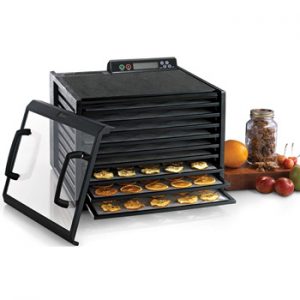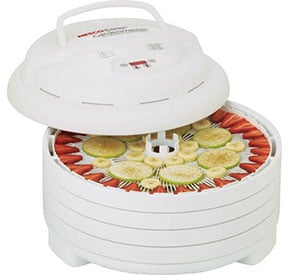As we all know it, dogs love eating meat. It’s their favorite kind of food, and, as far as they’re concerned, they’d like to eat it every single day of the week! That is exactly why the dehydrated chicken strips are a great thing to reward your dog with whenever you feel that he or she deserves it, and they are a real breeze to make.
Choosing the Right Meat
There’s only one thing you need for this recipe - boneless, skinless, additive-free chicken breasts. Don’t buy these things in some suspicious Chinese takeaway in a dirty alley, and don’t pay an enormous amount of money at the overpriced “organic” stores. Just buy some good-quality chicken that’s antibiotic-free from a regular store, and it will do the trick. Yes, the chicken breasts can get a little expensive but don’t forget that by dehydrating them, you will get all of those nasty things like preservatives and phosphates out of them. The water that leaves the meat doesn’t necessarily take out all of these harmful compounds with it, but it more likely concentrates them. The chicken breasts might require a little bit more time to prepare, but you can get more strips from them than you can from the chicken tenderloins, even though the tenderloins tend to sell a bit cheaper. Don’t forget to remove as much fat from the chicken as possible, not leaving the hangy little bits on the edges, since the fat tends to go rancid very quickly inside the dehydrator and can spoil the whole process. Just take your time and remove as much fat as you can.
Also, a word advice - do not try to dehydrate the boneless chicken thighs as a treat for your dog. Even though they’re sold at half a price of the chicken breasts, they’re filled with fat, and the removal process could last for a very long period.
Preparation
1. Start by thoroughly washing the chicken breasts under the stream of cold water, and then pat them dry with a paper towel. Cut the breasts into strips, making sure that they’re 1/4” long and then lay them across each tray of your dehydrator. It is crucial that these pieces are not touching each other, and you should also remove any empty racks. Make sure that you’re using the minimum number of required trays by consulting the owner’s manual.
2. Set your dehydrator to meat or poultry setting, which is usually around 165°F, and let it dehydrate for around 8 to 12 hours (the best choice would be to leave it overnight). The strips are done once they feel leathery to touch, and not moist or brittle. If you see any liquid dripping from the strips, remove it with a paper towel and let them dry some more. And if you would like these strips to be a bit crunchier, let them dry for 12 hours - your dog will surely love these “chicken chips”!
3. Now that they’re done allow the strips to cool and then store them in your storage jars or the zip-lock bags. If you store them immediately without cooling, they will create a condensation - and that’s the perfect situation for the bacterial growth. The dehydrated chicken strips are ready for your dog!
3. Now that they’re done allow the strips to cool and then store them in your storage jars or the zip-lock bags. If you store them immediately without cooling, they will create a condensation - and that’s the perfect situation for the bacterial growth. The dehydrated chicken strips are ready for your dog!
Advantages of Dried Chicken Strips
The dehydrated chicken is certainly one of the most convenient types of food for feeding and storage. If you make a lot of it, you can easily leave a big amount of it in the dog’s bowl so that he can eat it at his pace, and have no fears that it will spoil. In fact, many dog owners really appreciate the convenience of leaving enough dried chicken to feed their pets for an entire day, which is great if you need to take a brief trip away from the house. The dried chicken is also very easy to store, as the standard zip-lock bag will effectively keep all the rodents and insects away. It is also an excellent choice of food when it comes to pet training (as a reward treat) and has also been recognized as a splendid dental health supplement.














My dehydrator has a setting that is meat safe, but if yours doesn t, you could absolutely bake the sausage in the oven until it was fully cooked and then out it in the dehydrator to dry out!